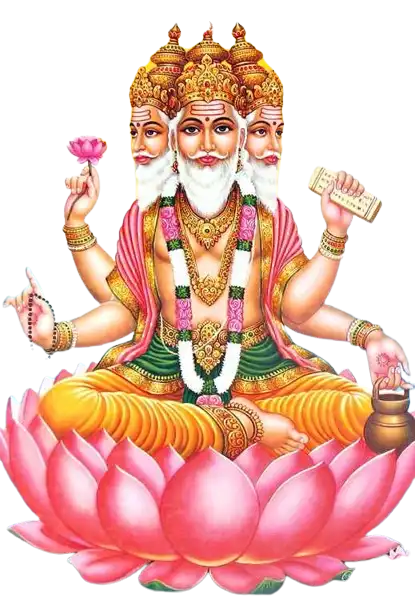1. Frequently Asked Questions about Lord Brahma
1. Who is Lord Brahma? Lord Brahma is the first god of the Hindu triumvirate or Trimurti, responsible for creating the universe and all living beings. He is often depicted with four heads, symbolizing the four Vedas (the most ancient Hindu scriptures), and four arms, each holding a symbolic item: a water pot (kamandalu), a spoon (sruva), a book (the Vedas), and a rosary (mala).
2. Why is Lord Brahma not widely worshipped? Despite his significant role in creation, temples dedicated to Lord Brahma are relatively rare compared to those of Vishnu and Shiva. One popular explanation is rooted in various myths, including a curse by Lord Shiva or the sages, due to Brahma's desire-driven pursuit or misleading conduct. However, he is respected and acknowledged in Hindu philosophy and rituals.
3. What does Lord Brahma symbolize? Lord Brahma symbolizes the creative aspect of the divine, representing the mind and intellect's power to conceive and manifest the cosmos. His four heads are said to represent the four cardinal directions, signifying his omniscience.
4. How is Lord Brahma celebrated in Hinduism? While there aren't many festivals dedicated exclusively to Brahma, he is honored during various Hindu rituals and ceremonies that pay homage to the creation aspect of the universe. The festival of Brahmotsavam, primarily dedicated to Lord Vishnu, also acknowledges Brahma's role as the creator.
2. Online Resources for Delving Deeper into Lord Brahma
1. The British Library's Online Collection: Offers access to manuscripts and ancient texts that mention Lord Brahma, providing insights into his mythological significance.
2. YouTube: Features documentaries, talks, and animated stories that explore Brahma's stories and teachings, making the complex themes accessible to a modern audience.
3. Academic Databases: JSTOR and similar platforms have scholarly articles analyzing Lord Brahma's role in Hindu literature and religious practices, offering in-depth perspectives.
4. Virtual Temple Tours: Some websites and virtual reality apps provide immersive experiences of the few Brahma temples, such as the famous Brahma Temple in Pushkar, Rajasthan, India.
3. Conclusion: The Enduring Legacy of Lord Brahma
In the fast-paced modern world, where creation is often seen through the lens of innovation and technology, Lord Brahma's symbolism invites us to ponder the origins and essence of creativity itself. He reminds us that every act of creation is a reflection of the divine, imbued with the potential to shape the universe in profound ways.
Exploring the mythology and teachings surrounding Lord Brahma through the resources mentioned can enrich our understanding of Hindu cosmology and its relevance today. It encourages a deeper appreciation for the interconnectedness of creation, preservation, and destruction in our lives and the world around us.
As we conclude, let us carry forward the essence of Brahma's wisdom, recognizing the creative spark within each of us and the responsibility that comes with it. May we approach our creative endeavors with consciousness and respect for the cycles of nature and existence, embodying the creative balance that Lord Brahma represents. Through this, we not only honor the legacy of the cosmic creator but also contribute to the ongoing creation of a world marked by harmony, innovation, and spiritual depth.

